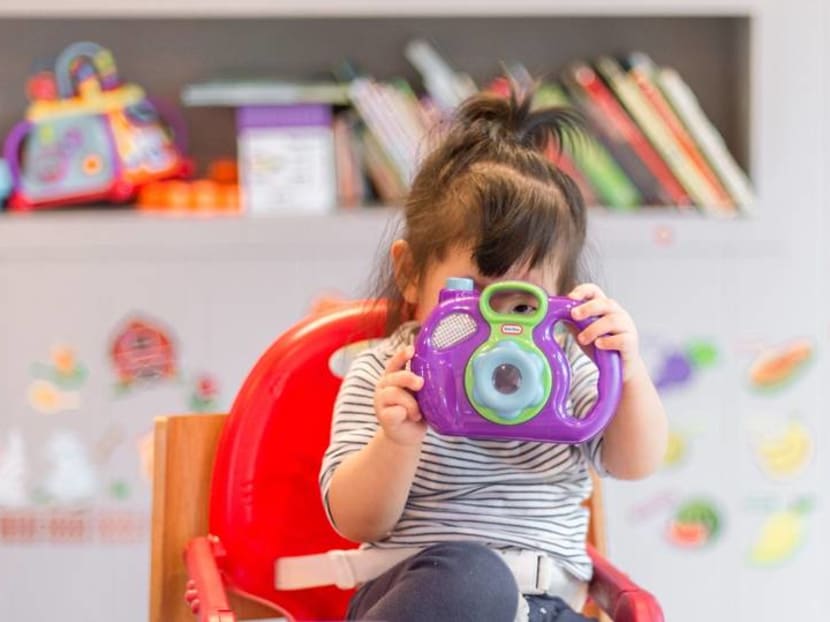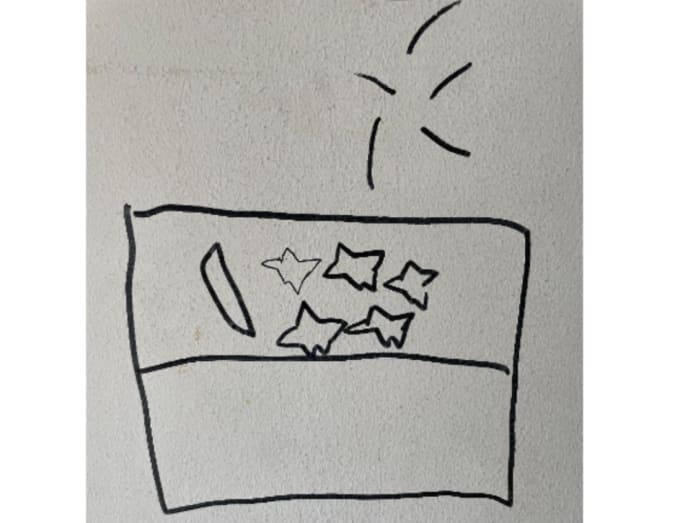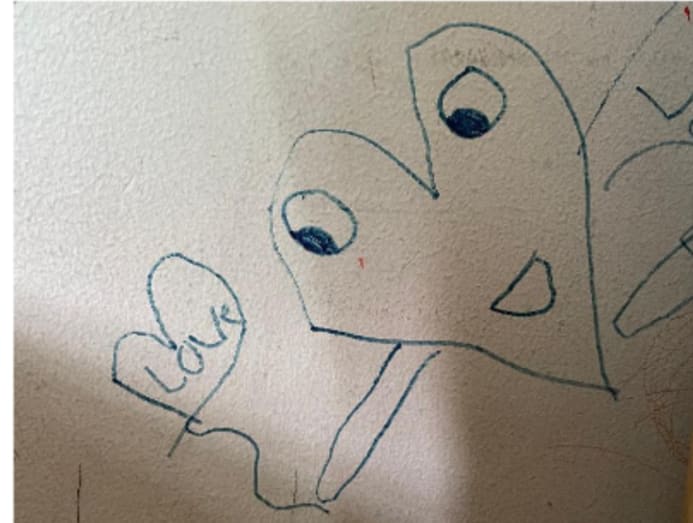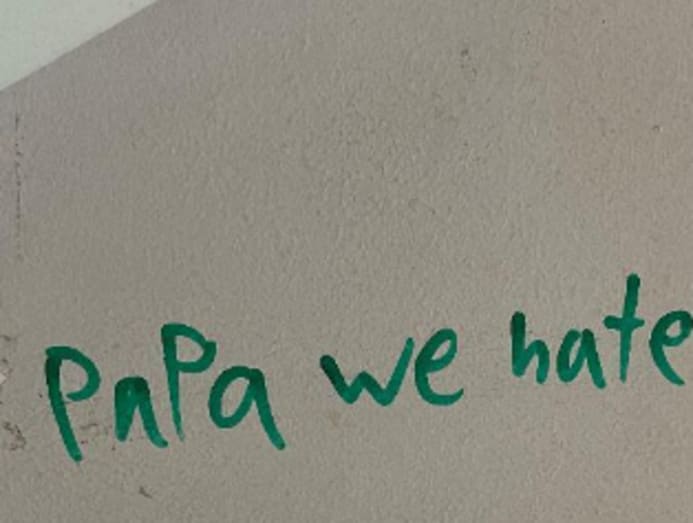Commentary: Why parents should allow kids to draw on the walls
It might seem daunting to give your kids free artistic rein of the home, but such free rein is valuable for children when they have few avenues to exercise it, says Tan Chin Hock, a father of three.

(Photo: Unsplash/Tanaphong)
SINGAPORE: When my children were toddlers, drawing was one of their favourite activities. We provided them with plenty of drawing paper and crayons.
One day, my eldest child asked me if they could draw on the wall. My first thought was why not?
After all, I did the same when I was young. It seemed a shame that my kids’ artwork had so far been stacked in a corner to collect dust. And frankly, I was tired of constantly replenishing the drawing paper supply. So I caved in to her request.
At first, the drawings were just random scribbles, but it was a joy to observe the kids explore all kinds of shapes and colours. As they gained more control over their fingers and hands, their drawings improved. They started noting their immediate world and drawing objects they saw regularly: Family, school, playground and pets.
Five years on, my kids (aged 11, nine and six) still draw as one of their favourite pastimes. We did have to teach them to confine their drawings to their grandparents’ room initially.
The doodles were a talking point for my parents, who reminisced about the days my siblings and I would draw cartoon characters in the three-room flat we grew up in. Soon after, the drawing canvas expanded to other walls in the house and most of our walls are filled with drawings.
FEW AVENUES WHERE KIDS CAN DRAW FREELY
It might seem daunting to give your kids free artistic rein of the home – but such free rein is valuable for children when they have few avenues to exercise it.
Related:
Most nurseries and primary schools conduct drawing classes to build fine motor skills and concentration. They provide children with various art materials, instructions on what to draw and a time limit. Topics include “My Friends” or “My Favourite Animals”.
For the lower primary levels, the subject is usually about the self and its relationship with others, which goes well with the school’s Character and Citizen Education curriculum.
But some children don’t want to follow rigid instructions, while others are slow in understanding them. As Lee Teck Hiang, founder of The Art Bones Studio and former art educator shared with me, free self-expression is usually discouraged due to practical reasons such as grading criteria.
Graffiti is thus a medium that truly allows kids to draw freely. Outside the confines of a school assignment, there are no expectations or standards.
Think: A drawing of a dog should look like a real-life dog. If not, it would not be praised as much as other pieces that look more realistic. It is not surprising to see children believe that they’re not talented because they couldn’t produce a good representational drawing and stop trying for good.
As parents who place less emphasis on academic achievements, my wife and I are more inclined to provide the space and resources for our kids’ creative juices to flow. To us, a dog can look like a blob with sticks and that is fine.

GRAFFITI CAN TEACH CHILDREN IMPORTANT LESSONS
Other cities have used graffiti as a tool to teach children important lessons.
Salt Lake City, Utah, runs a graffiti-making programme in which kids aged between eight and 13 are asked to paint the walls of various public places. In this programme, children are not only given an outlet for their creativity but also learn to work together, make decisions and share responsibilities. It also engages them as citizens as they feel proud to have left their mark on the city.
In Singapore, we have similar spaces such as Somerset Skatepark, Scape Youth Park, Bukit Batok Skatepark and others where street artists and members of the public are allowed to bring their imaginations alive via spray cans and paints. While these avenues promote creative expressions, it should be noted that the usage of these high and massive walls is still largely confined to teens and adults.
While our children are not able to leave their marks in public areas, allowing them to draw on the walls at home likewise gives them a sense of ownership over their space.
A child’s imagination is very rich. Every day is a new experience and he needs a channel to articulate his views. Moreover, children are spontaneous – whenever a new idea crosses their minds, they want to share it.
The walls of his room become a canvas where he can draw objects that fascinate him and to his heart’s content. We may consider it messy, but from a child’s point of view, these are valuable to him.

HOW TO LET YOUR CHILDREN EXPRESS THEMSELVES THROUGH GRAFFITI
For these reasons, consultant psychologist and counsellor Dr Shweta Sharma, Columbia Asia Hospital, advises parents and teachers to encourage children to paint on walls and floors. Here are practical ways to go about doing it.
First, set boundaries. No drawing in the kitchen for safety reasons, and of course, no drawings on walls outside the house. You could also designate certain walls for drawing – the children’s room is a good place to start because they spend the most time in it and are attached to the surroundings.
If you can’t stand the idea of messy walls, you could tape mahjong paper to them. If you’re committed, you could apply a coat of enamel paint on the wall, so that marks and ink can be erased with solvent. Chalkboard paint is another do-it-yourself option for converting your walls into blank slates for chalk drawings.
Second, refrain from instructing children on what and how to draw, and from making negative comments about their drawings. We have to appreciate their imagination: The way a child sees a moon or a watermelon could be different from reality.
Instead, ask your children about their art. Keep your conversation open-ended so they have an opportunity to explain what they have drawn and why they have drawn it that way.
We could ask probing questions such as, “Tell me about what you drew. Who are these people and what are they doing now?” He will give you cues to his thoughts and the way he interprets the world around him.
Paintings made by your child can also hold clues about his mental well-being. If you find your child drawing unhappy faces or any disturbing figures, inspect them closely. In many cases, children cannot tell us about abuse or any unpleasant incident that troubles them.
Once, I had to take back the privilege of devices from my children and my second child left a message for me on the wall.
Sensing something was not right, I initiated a conversation and got to know that my handling of the situation could be managed better than just snatching the device from her. Today, we have a very close and loving relationship between myself and my three children.

Graffiti is a tool all parents can use to understand our kids better. For my children, it’s cultivated a passion for, and hopefully a lifelong hobby of, drawing.
Whenever I host visitors, a vast array of scary monsters and weird cartoon characters watch over them. Each one sparks a conversation.
Tan Chin Hock is the Founder of Holdinghands Studio.






